Type species: Caligula simla (Westwood, 1847).
A cold-tolerant genus of about 10 species endemic to the eastern Palaearctic, with one species penetrating along the himalayan foothills as far west as Afghanistan. Closely related to Perisomena Walker (1855), Neoris Moore (1862) and Saturnia Schrank (1802). Included in the latter by some authors and previously classified as Caligula Moore (1862). Nässig (1994) tentatively synonymized Caligula with Rinaca, but treated it as a subgenus of Saturnia. However, although Rubinoff & Doorenweerd (2020) agreed with the synonymy, they elevated Rinaca from a subgenus to a full and valid genus.
HOSTPLANT FAMILIES: Many trees and shrubs, but with a preference for the Rosaceae and Juglandaceae.
UK: Birch Emperor Moth; Lindia Emperor Moth; Himalayan Emperor Moth.
Caligula lindia Moore, 1865, Trans. ent. Soc. Lond. (3)2: 424.Type locality: N. E. India.
(Taxonomic note. Most taxonomic works place this species in the genus Caligula Moore, 1862, along with the other species of what is now Rinaca. Other works include it in Saturnia. Part of the Himalayan Rinaca group, along with Rinaca anna (Atkinson (in Moore), [1865]), Rinaca bieti (Oberthür, 1886) and Rinaca grotei (Moore, 1859). [See Nässig (1994) and Naumann & Nässig (2010) for more details])
(Taxonomic note. The taxon bonita Jordan, 1911, from eastern Nepal, Sikkim (India), Bhutan and southern Tibet, and previously listed as a synonym of Rinaca lindia, has been elevated to full species level. [See Nässig (1994) and Naumann & Nässig (2010) for more details on this taxon, as well as the closely related Rinaca rosalata (Naumann & Nässig, 2010) from Nepal.])
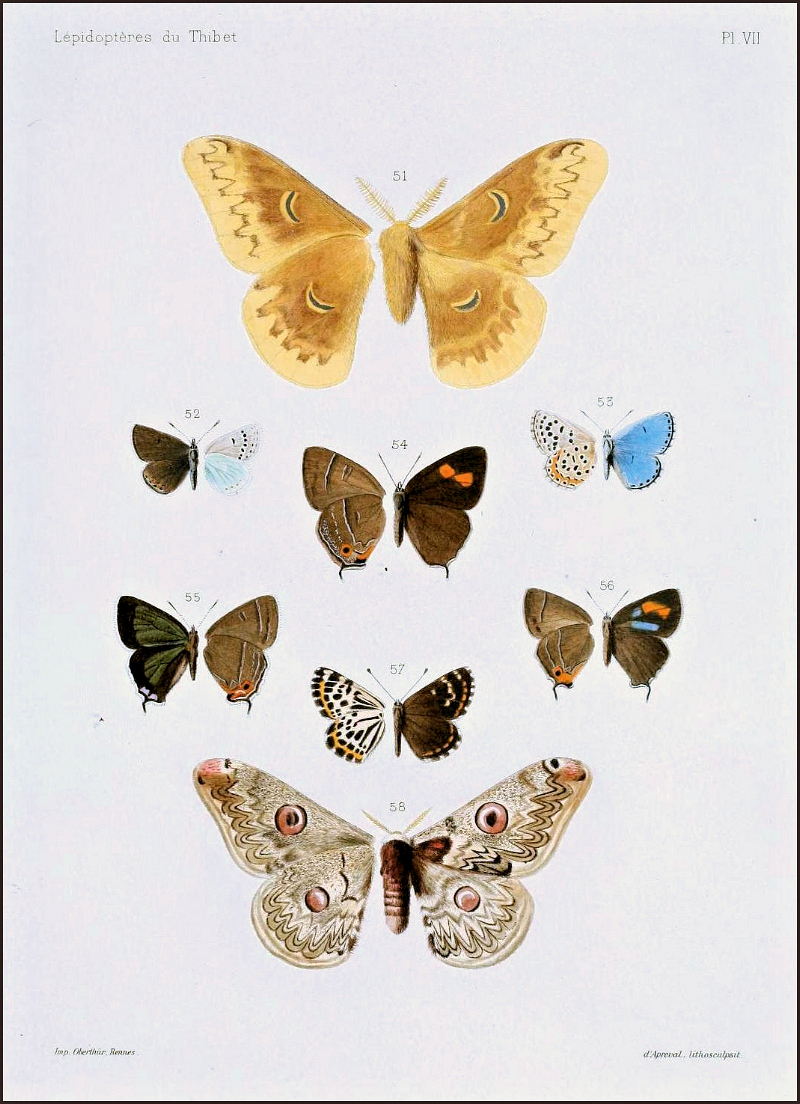
Holarctic; eastern Palaearctic region. Pleistocene refuge: Monocentric -- Nepali refuge.
Wingspan 90--96mm. A very grey-looking species (when fresh), with little of the brown found in Neoris huttoni. However, the hind wings may be flushed with rose. Individual variability tends to be confined to the intensity of grey, with both very light and dark individuals in any given population.
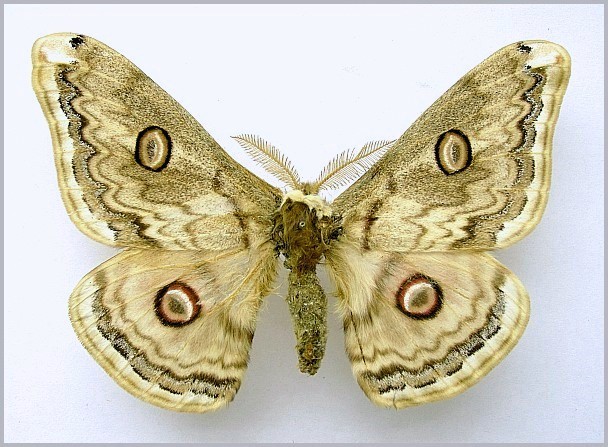
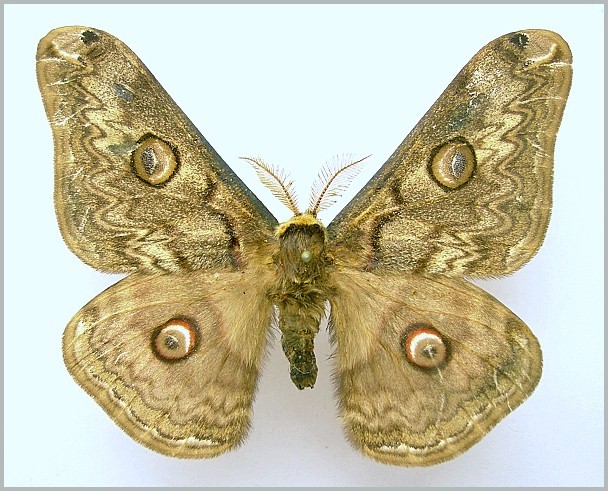
Generally found between 2000m and 5000m altitude. Although the moths emerge during daylight hours, generally in the afternoon, this is a nocturnal species (Nässig, 1983a). Pairing usually takes place after midnight, with the moths generally staying together until the following evening. Most eggs are deposited that first night, with the adult moths living 3-6 days.
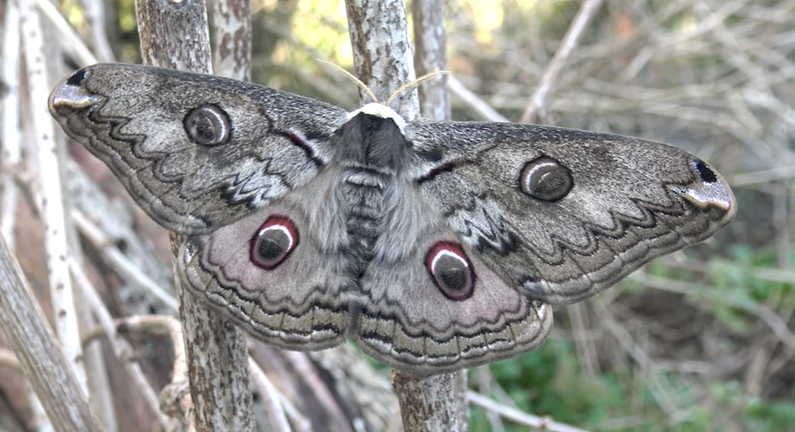

In Afghanistan, late June to early July. At higher altitude (5000m) in Kashmir, India, late July to early August. Recorded in Bhutan as early as late April. Univoltine.
OVUM: Oblong, 1.8 x 1.3mm, greyish-white with brown gum. Laid singly or in small batches on the twigs and underside of leaves, usually hatching 7 to 14 days later (Nässig, 1983a).
LARVA: Full-fed 60--80mm. Monomorphic. Described in detail by Nässig, 1983a. Similar to those of Neoris huttoni Moore, 1862, but more compact and less hairy in the final instar, and with 'eye-like' tubercles on the penultimate segment.
Newly hatched larvae are whitish- or yellowish-green, but these become pale apple-green with feeding. Black dots are present on each body segment dorsally (particularly down the heart line) and dorso-ventrally, and there are numerous thin, pale hairs. A very indistinct, pale, subspiracular band is present. In the second and third instar these features become more pronounced (except the dorsal black dots, which fade away), with the dorsal tubercles on the thoracic and penultimate segments acquiring dark, granular 'warts'. The anal flap and clasper plates become orange-brown, and the subspiracular band more pronounced. The latter may even become edged dorsally by a fine orange line. In the fourth instar the body tubercles are noticably paler than the basic body colour, with the true tubercle spines being quite sharp, rigid and painful to the touch. The two largest 'warty' penultimate segment tubercles also become orange-brown and distinctly 'eye-like'. This colour scheme carries over into the distinctly bristly final instar. The basic green body colour below the subspiracular band tends to be more bluish than that above, which remains apple-green. When ready to pupate this apple-green body colour changes to golden brown.
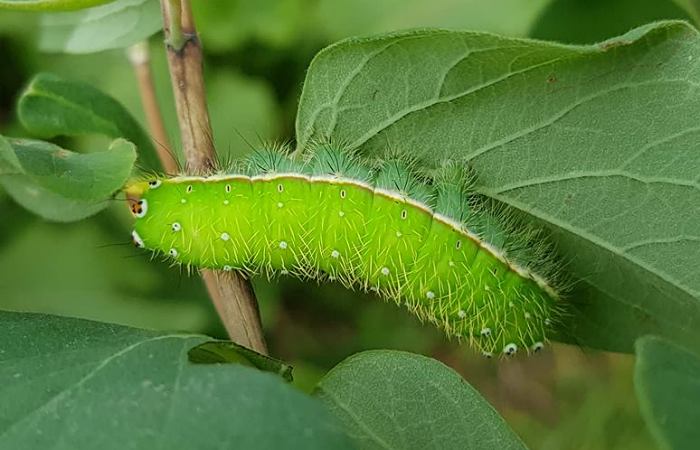
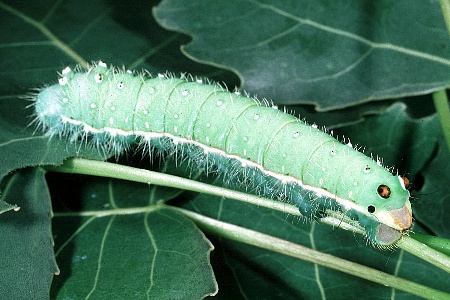
Hostplants. Apparently polyphagous (Nässig, 1983a), but commonly found on Hippophae and birches (Betula). Also on Lonicera in Gilgit-Baltistan, Pakistan (Serge Yevdoshenko, pers. comm 2018) and, in India, on Juglans regia and Populus deltoides.
PUPA: Described in detail by Nässig, 1983a. Very similar to that of Neoris huttoni, i.e. cylindrical, but tapering towards both ends, with a distinct dorsal keel along the prothorax. Uniform mahogany-brown with a yellowish, semi-transparent, photo-sensitive window between the eyes, and with a pair of hook clusters anally. In a reddish-brown, elongate, pear-shaped, single-walled, semi-transparent, papery, unsealed cocoon on the ground among debris or under stones. The overwintering stage. Will tolerate temperatures as low as minus 15 °C, with 5-6°C breaking diapause thereafter (Nässig, 1983a).
Unknown.
From northeastern Afghanistan (Samangan, ca. 1500m; Paghman, 30 km NW Kabul, 2500m; Salang Pass, 2350-2700m; Safed Koh mountains, 2300m) (Daniel, 1971) north across mountainous northern Pakistan, from the Salang Pass, Khyber Pakhtunkhwa (Abdurehman Jani, iNaturalist 2022), to Gilgit-Baltistan (Zafeer Ahmed Shaikh, iNaturalist 2024) and Kashmir (Naumann & Nässig, 2010).
Extra-limital range. The himalayan foothills of northern India, from the Sariska Tiger Reserve of Rajasthan (Dar et al., 2021), Jammu & Kashmir (Dar, Shah, Jamal & Javid, 2022) and Ladakh (Otto Pfister, iNaturalist 2004) eastwards across Himachal Pradesh, Uttarakhand (Smetacek, 2011) and up to the borders of Nepal (Naumann & Nässig, 2010; Rajendra Koranga, iNaturalist 2022).
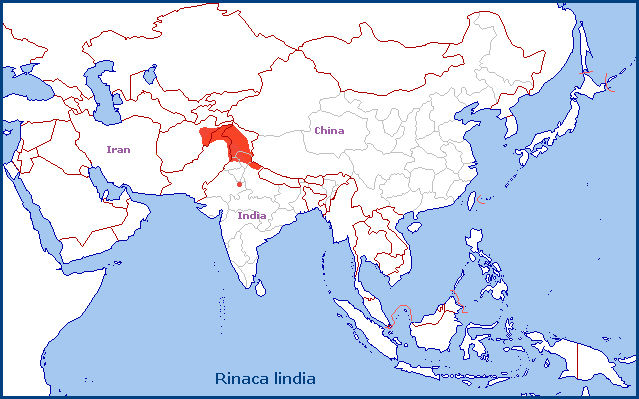
None.
 Return to species list
Return to species list